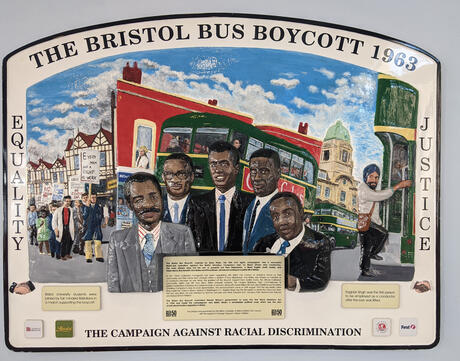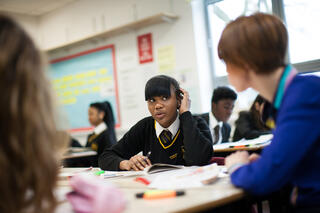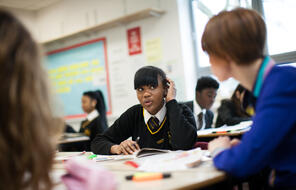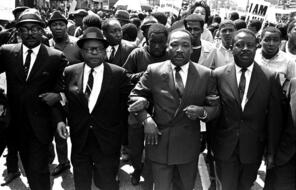After the end of World War II and the passing of the 1948 British Nationality Act, which permitted individuals with British passports to enter and settle in the UK, the Caribbean community in the UK grew significantly. They participated in post-war rebuilding efforts and over time established family and professional roots. By 1958, there were approximately 1,300 West Indians in Bristol, less than 1% of the city’s population; however, their unemployment rate was approximately twice that of white residents.
By 1960, the West Indian population had grown rapidly to 3,000 in Bristol, and their unemployment rate remained significantly higher than that of white residents. West Indians, along with other immigrants from Asia and South-East Asia, faced discrimination when seeking employment and housing—with some boarding houses posting signs that read “No Irish, no blacks, no dogs,” as well as the threat of attack by violent gangs of young white men called Teddy Boys.
By 1963, the West Indian population in Bristol had increased to 7,000 people, and with this rapid influx of black workers and their families came heightened racial tension and discrimination. As conservative MP Ronald Bell commented in a 1963 Commons debate:
Behind all is fear. Fear for standards, fear for material interests, fear of excessive fertility on the part of the immigrants, of being swamped in our own country. They [the whites] fear miscegenation.
Before the passing of the Race Relations Acts in 1965 and 1968, there were no laws in the UK to protect individuals against racial discrimination in the workplace. Some cities, such as London, Wolverhampton, and Manchester, employed black bus drivers and conductors.
In Bristol, the state-owned Bristol Omnibus Company and the Passenger Group of the Transport and General Workers’ Union (TGWU)—which all transport workers, black and white, were required to join—both denied that a “colour bar” existed. But the bus company only employed black workers in maintenance jobs, and the Passenger Group of the TGWU had passed a resolution in January 1955 that black workers should not be employed on the buses as drivers or conductors.
By the early 1960s, no black or Asian man or woman had ever been hired to work on buses in Bristol despite their efforts to apply for open positions.
In 1961, the Bristol Evening Post exposed the colour bar in a series of articles about the Bristol Omnibus Company, claiming that the bus company refused to hire qualified non-white workers despite a shortage of drivers and conductors. In fact, there were many open positions thanks to a high turnover rate at the company due, in part, to the low wages and long hours.
Drivers and conductors relied on these positions remaining vacant so they could work overtime, putting in the 100+ hour weeks necessary to make just above the average weekly wage in Bristol.
In response to the Bristol Evening Post articles, the regional secretary of the TGWU again denied the existence of a colour bar, while the bus company blamed the workers’ prejudice for the lack of non-white drivers and conductors. However, Ian Patey, the general manager of the bus company, offered a more revealing explanation of their hiring policy when he stated that West Indians “. . . were employed in the garage but this was labouring work in which capacity most employers were prepared to accept them.”
In 1962, Ena Hackett, a Jamaican immigrant, was rejected when she sought employment as a bus conductor with the Bristol Omnibus Company, despite having applied for a posted opening and meeting all of the qualifications. Motivated by Ena’s case and the other discrimination they observed and experienced in Bristol, a group of young black activists—Roy Hackett (Ena’s husband), Owen Henry, Audley Evans, and Prince Brown—formed the West Indian Development Council to advocate for the rights of members of the black community.
The idea for the boycott took shape after members of the West Indian Development Council met Paul Stephenson, a university educated RAF veteran who moved to Bristol in 1962 and was the city’s first black social worker. Stephenson found inspiration in the work of Dr. Martin Luther King Jr., Rosa Parks, and other American civil rights activists. When thinking about how he might expose the Bristol Omnibus Company’s discriminatory hiring practices on the buses, Stephenson recalled the 1955-1956 Montgomery, Alabama, bus boycott and how it successfully inflicted economic pressure on the city and brought national attention to racial discrimination. Stephenson created a plan with one of his night school students, Guy Bailey. As the story goes, Stephenson, who could not be identified as black by his Essex accent, called the bus company in response to a posted position and explained that one of his students would like to apply. Eighteen-year old Guy Bailey met all of the job’s qualifications, but when he arrived at the office, the secretary announced to her boss that he was a black man, and Bailey was denied the interview.
Stephenson then organised a press conference and announced the bus boycott. In addition to leading the boycott, protesters picketed bus depots and key places along bus routes, and they organised blockades that prevented buses from entering the city centre. Like Dr. King’s efforts in Montgomery, the boycott and protests were non-violent, and while protesters were harrassed, none of them suffered physical harm.
At the outset of the boycott, the press implied that a boycott protesting racial discrimination might be necessary in Montgomery, but not in Bristol. But after hearing Ian Patey’s justification of the bus company’s hiring practices, the press largely supported Stephenson and the West Indian Development Council’s campaign to expose and eliminate the colour bar, and it put pressure on the bus company and the TGWU to end their discriminatory policies.
By 1st May 1963, the boycott was continuing to attract new allies, including students at Bristol University and members of Parliament, including Bristol South East MP Tony Benn, Labour leader and future Prime Minister Harold Wilson, world famous cricketer and High Commissioner for Trinidad and Tobago Sir Learie Constantine, and diplomats from Jamaica and the Caribbean.
While the West Indian community may have supported the goal of non-discriminatory hiring practices, most did not actively participate in the boycott or the protests that accompanied it. Many hesitated because of the fear of being attacked, losing their jobs if spotted protesting on television, and a reliance on public transportation to get to work. Nevertheless, some did participate in the boycott and demonstrations, including what historian Madge Dresser believes may have been the first black-led march against racial discrimination in Britain on 6th May 1963.
The boycott captured the attention of people across the country and pressure mounted on the bus company and the union. On 28th August 1963, the same day that Dr. Martin Luther King Jr. delivered his “I Have a Dream” speech in Washington, D.C., Ian Patey announced an end to the Bristol Omnibus Company’s discriminatory hiring practices, stating, “There will now be complete integration without regard to race, colour, or creed. The only criterion will be the person’s suitability for the job.” Some conductors and drivers resigned rather than work alongside non-whites on the buses. Within two weeks, Raghbir Singh, an Indian-born Sikh, became the first non-white bus conductor employed in Bristol.
Because the settlement agreement is not available for review and documents from the bus company and union have been lost, destroyed, or vanished over the years, it remains unclear whether the colour bar was ended in August 1963 or merely revised to include racial quotas.
Two years after the boycott, less than 2.5%—4 drivers and 39 conductors—of the bus employees were non-white.
Two years later under the leadership of Prime Minister Harold Wilson, a supporter of the boycott, the 1965 Race Relations Act was passed, which outlawed discrimination “on the grounds of colour, race, ethnic or national origins.”





















